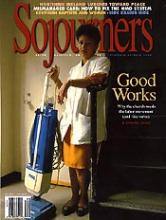Many Americans' hopes for social justice were lifted in October 1995 when new leaders took the helm of the AFL-CIO, promising great things for working families. The "New Voice" team led by John Sweeney, Rich Trumka, and Linda Chavez-Thompson called for "a new progressive voice in American life...changing the direction of American politics....a vibrant social movement." Perhaps now, many hoped, the overly bureaucratic organization could again take its place alongside other progressive movements.
For many, prospects for a more inspiring union movement were dashed two years later when a government monitor uncovered corruption in the Teamsters, the union that had most symbolized the changes in organized labor. President Ron Carey, who had swept mobsters out of the union and led UPS workers to a stunning strike victory, was accused of diverting union funds to his re-election campaign. Was Carey's downfall a sign that the labor movement was incapable of reforming itself? Were "labor bosses" destined to remain just that and no more? Was this 16 million-member force doomed to be its own worst enemy, incapable of rousing itself to fight alongside other movements for social justice?
The answers to these questions are not simple, and give reason for both optimism and doubt. Mostly, the state of reform in the labor movement reminds us what we knew all along: Real and lasting change must come from below, from the rank and file. Despite necessary changes occurring at the top of the AFL-CIO, the labor movement is still a long way from living up to its potential, in part because it has not unleashed the power within.
In the forthcoming The Transformation of U.S. Unionism (Lynne Rienner Publishers), Herman Benson, longtime head of the Association for Union Democracy, argues that the AFL-CIO's new commitment to "organize the unorganized" is not likely to catch fire as long as unions remain in their current bureaucratic state. He writes:
Read the Full Article
